The South East Asian Kingdom of Cambodia is one of my favourite countries, and is such an enriching and wonderful travel experience. It has one of the most impressive temple complexes in the world, beautiful beaches, stunning countryside, and wonderful people.
There is, however, a darker side of Cambodia that must be acknowledged when exploring the country as well. Just 40 years ago, it was victim to one of the most brutal genocides in recent history. I’ll go into this in more detail later in the post, but it’s very important to be a mindful traveller in Cambodia.
That being said, the country is rebuilding – and the right kind of tourism really does benefit it doing so. This is why I’d highly recommend spending two weeks in Cambodia – or even longer.
How to Get to Cambodia

If you’re visiting Cambodia on an extended South East Asia trip, you can travel from many places overland.
- If you’re visiting Cambodia from Vietnam, night buses leave Ho Chi Minh City for Phnom Penh (then you can complete this Cambodia itinerary in reverse).
- From Laos, you’ll want to get to the city of Pakse, and then you can head to Siem Reap to begin the Cambodia travel itinerary.
- From Thailand, buses leave Bangkok for Siem Reap, Sihanoukville and Phnom Penh.
Click here to buy tickets for your buses in Cambodia.
There are international airports in Phnom Penh, Siem Reap and Sihanoukville, but the destinations are limited, and prices can be high. It’s definitely better to fly into Bangkok and overland to Cambodia.
If you’re visiting Cambodia from its neighbouring countries, make sure to check out my other itineraries! I have a Vietnam itinerary, a Laos itinerary and a Thailand itinerary ready and waiting for ya. If you’re heading further south, check out my Bali itinerary and Singapore itinerary, and stay tuned for my Malaysia itinerary (coming in 2020!). All are filled with helpful travel advice, tips on being a more sustainable traveller and the odd witty joke thrown in for good measure.
Visas for Cambodia

Most nationalities can get a visa on arrival at a Cambodian air or land border. The price varies but is around $30-$40 (must be paid in USD), and it is valid for one month.
You can also get an e-visa online before visiting Cambodia.
Make sure you keep your immigration form and your passport is stamped correctly when entering Cambodia – otherwise you could encounter problems when trying to leave!
WiFi in Cambodia
WiFi in Cambodia isn’t as strong as its neighbouring countries, but is still fine for most purposes. Siem Reap and Phnom Penh both have good connectivity – other regional areas vary, but you’ll normally be able to find a good connection somewhere.
Many travellers choose to get a local SIM card to make travelling around a little bit easier.
When to Visit Cambodia
Cambodia is best visited during the dry season – from around November to April. It does, however, get very very hot from February until April, as it is the build-up to the wet season; so do bear that in mind.
That being said, if you can only visit during the wet season, it’s still worthwhile. Travel might take a bit longer, but all of the destinations on this 2 week Cambodia itinerary should still be accessible.
Health and Safety in Cambodia
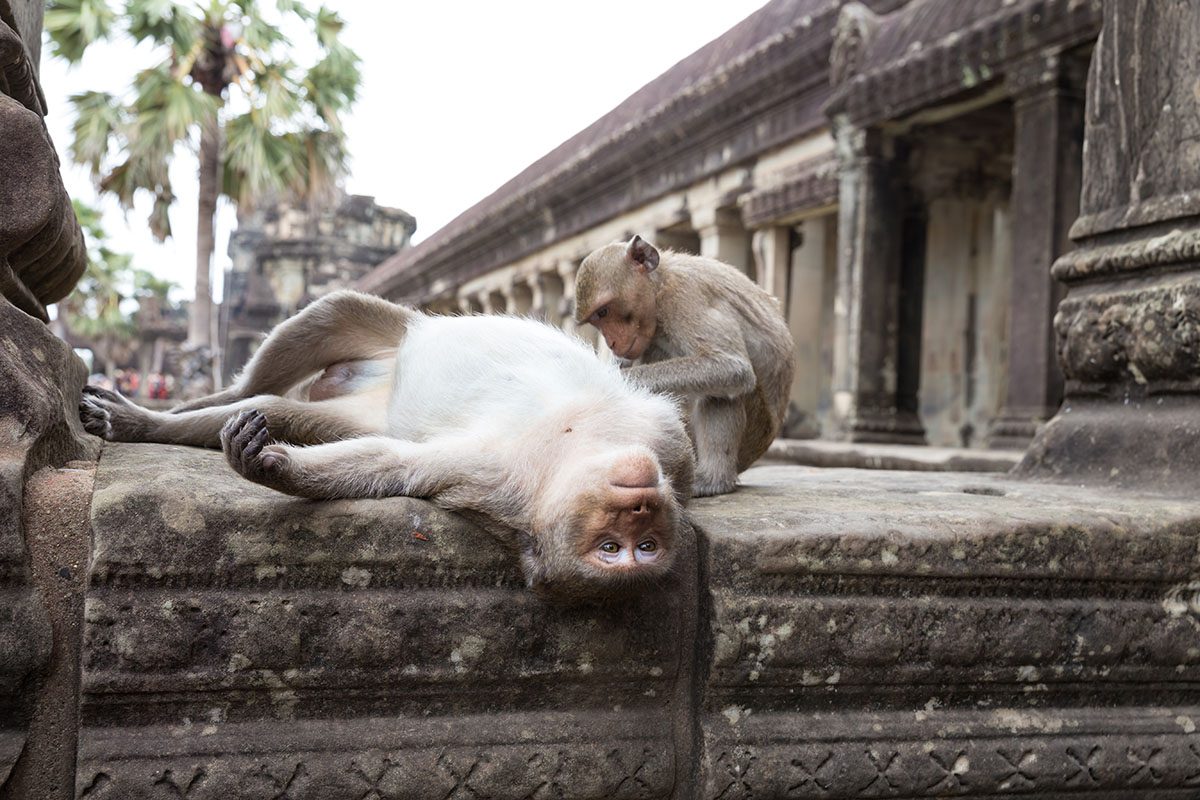
Being a tropical country, there are some health considerations that you should take into account when visiting Cambodia. Dengue is a real threat in the country, so make sure to bring high-quality insect repellant and go to the doctor straight away if you feel any flu-like symptoms.
Malaria is also a possibility in some areas – I’m definitely not qualified to give medical advice on this blog, so do your own research and decide whether you want to take malaria pills or not. I did take them, but I met lots of people who didn’t.
Other vaccinations that you should consider are tetanus, rabies, typhoid and hepatitis A and B. Watch out for monkeys and stray dogs and cats – if you are bitten by one of these you’ll need to see a doctor quickly for rabies treatment (even if you’ve already had the pre-exposure shots, post-exposure shots are still needed). Check out fit for travel’s Cambodia page for more information about jabs.
Money in Cambodia
Cambodia has its own currency – the riel – but as a tourist, you’ll only be quoted prices in USD. You can pay in riel (there are 4,000 riel to the dollar), but locals expect tourists to always pay in USD. If you’re due 50 cent change, however, you’ll get that back in riel. It’s also completely feasible to pay part riel, part USD, if you have some small riel that you want to use up.
Is Cambodia Safe for Travellers?
The question of ‘is Cambodia safe’ seems to come up quite a bit when researching travel in the country. While Cambodia is less developed than its surrounding countries, there’s nothing that makes it unsafe, apart from the roads.
There were a few times where I felt like the buses were a little sketchy; although the roads aren’t mountainous like Northern Laos, and the drivers are of course, used to these roads.
Many tourists hire out motorbikes; if you’ve got experience and are confident in your abilities, go for it – but I wouldn’t recommend driving one of these if you’re inexperienced – they really are quite dangerous.
Social-wise, Cambodia is fine. There is pickpocketing in central Phnom Penh – I was actually told by several locals to put my phone away because of snatchers. I never actually met anyone who’d experienced their phone being snatched, but I’m sure the local’s concerns were not unfounded. So just take care of your belongings, however, violent crime is very very low.
Many Cambodians speak excellent English and are very helpful, whenever I had any problems or concerns I always found someone to help me out.
Where to Stay in Cambodia
There are all sorts of different places to stay in Cambodia. From backpacker hostels to beachside camping to five-star hotels, there are places to accommodate anyone in this country.
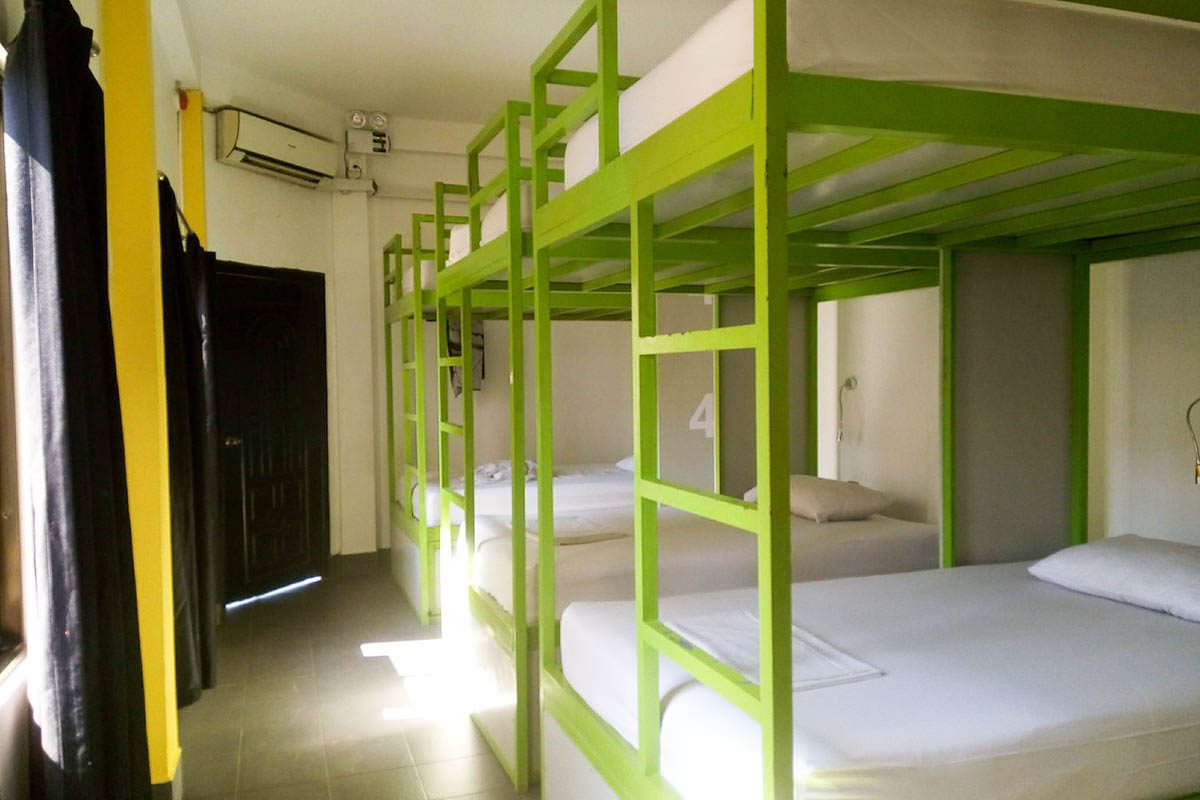
I’ll go into some of the best places to stay in Cambodia throughout the post, with links to individual accommodation providers, but you can also search on Booking.com by clicking here.
What to Eat in Cambodia
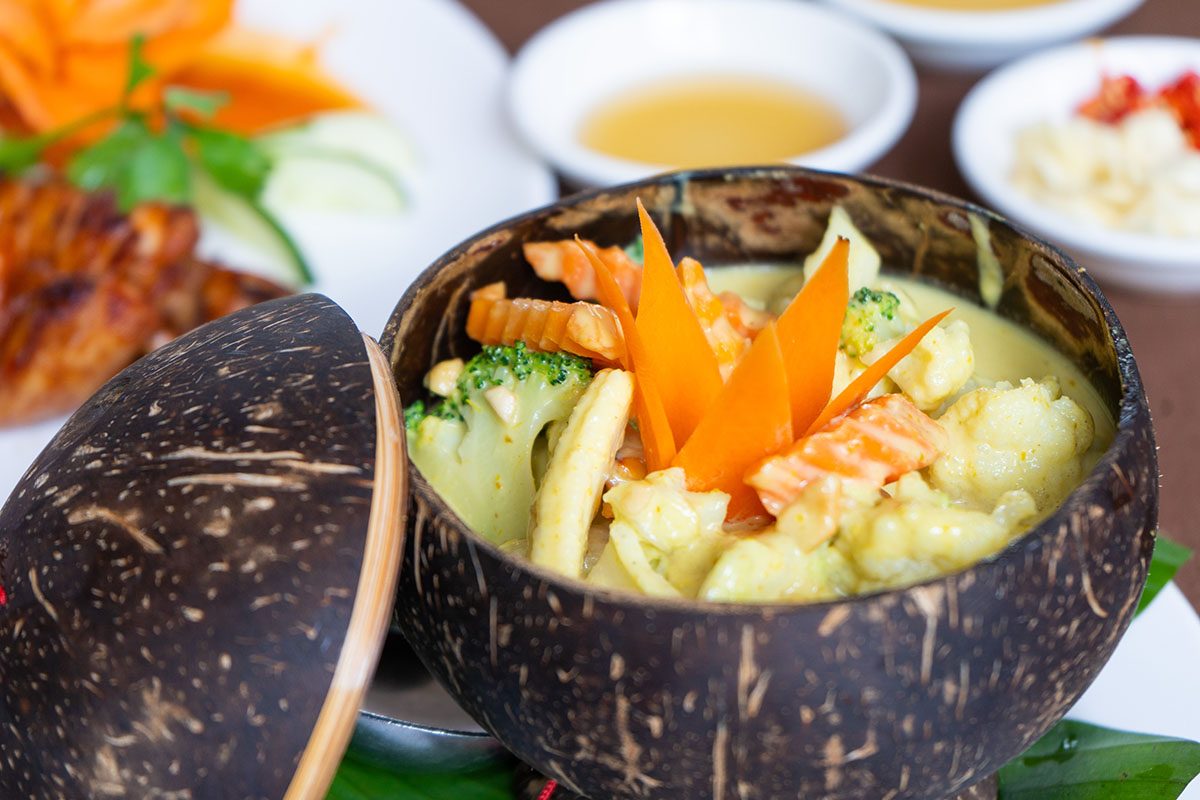
You can find all sorts of South East Asian specialities in Cambodia – generally I ate curries and soups with lots of spice. Rice is plentiful and very cheap (and served with every meal!). There’s also a lot of Western food on offer, due to the amount of tourists in the country. Being vegetarian or vegan is easy in the tourist areas of Cambodia, but might be a little bit harder in the less-visited areas.
How to Get Around Cambodia
Getting around Cambodia is rather… slow. While its neighbours Vietnam and Thailand have great train connections, Cambodia mainly relies on buses and minivans to get from A to B. Taxis between cities can also be inexpensive, if you have a few people in your group to split the costs.
There are tourist connections between all of the destinations mentioned on this post – if you want to go off the beaten track, you might have to ask around a bit more but there are normally local buses. Transport in Cambodia can be booked through Bookaway – click here to check it out or use the search bar below.
Obviously, to get to the islands, you’ll need to take boats. There are also internal connections between Phnom Penh, Siem Reap and Sihanoukville – but as this is an overland itinerary, I’ll always recommend ways to do it without flying!
How Long to Spend in Cambodia

For this Cambodia itinerary 2 weeks is the optimum amount, but you could definitely add on other destinations and increase your time in the country – or spend extra time at each stop.
Two weeks to a month is a great amount of time to stay – after a month you’ll need to renew your visa anyway, and any time under 2 weeks means that you’ll be spending too much time on buses!
Where to go in Cambodia for Two Weeks: Two Week Cambodia Itinerary
Siem Reap – 3 days

Siem Reap is a touristy, backpacker town with far too many foreign-owned bars. So why am I recommending you spend three days here? Because of Angkor Wat. You might have heard of her, she’s kind of a big deal.
Most people get around Cambodia by tuk-tuk. It’s likely that your tuk-tuk driver will ask if you want a tour around Angkor Wat the following day. It should cost $15 to do the small circuit and $20-25 for the large circuit. That’s the standard price, so I’d advise to just go with the first person who offers you.
You can also arrange someone from your accommodation, but I’d probably go with the tuk-tuk driver who approaches you first.
Where to Stay in Siem Reap
Hostel: I stayed at Mad Monkeys Siem Reap, which is a party hostel. I’m not generally a fan of party hostels, I find them quite out of touch with the community around them, but Mad Monkeys gives parts of its profits to helping projects in the local area, and gives fair work to their staff – I really can’t fault them on their ethics. Plus it’s a nice hostel, with spacious dorms, a great restaurant and bar, and lovely staff. You can read my full review of it here.
Being the party hostel it is, it does attract some not-so-savoury guests, but I did meet some really nice people there too (and of course, the actual hostel can’t control what the guests do). Click here for more information and to book.
Budget Hotel: The Amazing Residence is a great budget-friendly option in Siem Reap, with a swimming pool, restaurant and bar on-site and large, spacious rooms with plenty of natural light – it’s great value for the price. Click here for more information and to book.
Mid-Range Hotel: eOcambo Resort & Spa has well-furnished rooms with comfortable beds, looking out over a courtyard area. Each room has a deluxe attached bathroom and guests can make use of the restaurant, pool and bar facilities. Click here for more information.
Luxury Hotel: With facilities like a luxury pool with waterfalls and roll-top baths in the rooms, Golden Temple Retreat is one of the most impressive hotels in Siem Reap. The rooms are spacious and comfortable, some which open right out onto the pool. There is also a spa, bar and restaurant on site. Click here for rates and to book.
Day One: Angkor Wat, Angkor Thom and other temples

Your driver will recommend a three day Angkor Wat temples itinerary, and of course, they know a lot better than I do, so take my suggestions with a pinch of salt. This is just what I worked out with my driver and what worked well for what I wanted to do and see.
But first things first, you need to purchase a pass. Your driver will take you to where you need to buy it from. You can buy a 1 day pass or a 3 day pass (or a more day pass, but if you only have 2 weeks in Cambodia you might need to stop at just three days!).
There’s a big circuit and a small circuit in Angkor Wat. Your guide will probably recommend visiting Angkor Wat itself first, and then travelling around all the most popular temples on the small circuit. These include:
- Angkor Thom – the second most popular temple, after Angkor Wat.
- Bayon – one of the most majestic temples in the Angkor area, with many steps to go up!
- Elephant Terrace – this was used by the King to address citizens in the area.
- Ta Prohm – this is the tomb raider temple.
Day Two: Angkor Wat Sunrise

Waking up at 4am is often pretty painful, but in this case, it’s worth it. The Angkor Wat Sunrise is one of the most beautiful scenes you’re likely to ever see – you’ll see the majestic temples silhouetted against gorgeous red and gold skies, then once the sun comes up have the whole day ahead of you to see more of the complex.
Just so you know, this isn’t a hidden gem, at all. It will feel like all the tourists in South East Asia are there watching the sunrise with you, but it still is worth doing.
Take a tuk-tuk there – your tuk-tuk driver from the day before will most likely offer their services again – and try to get there as early as possible, as it really does get incredibly busy!
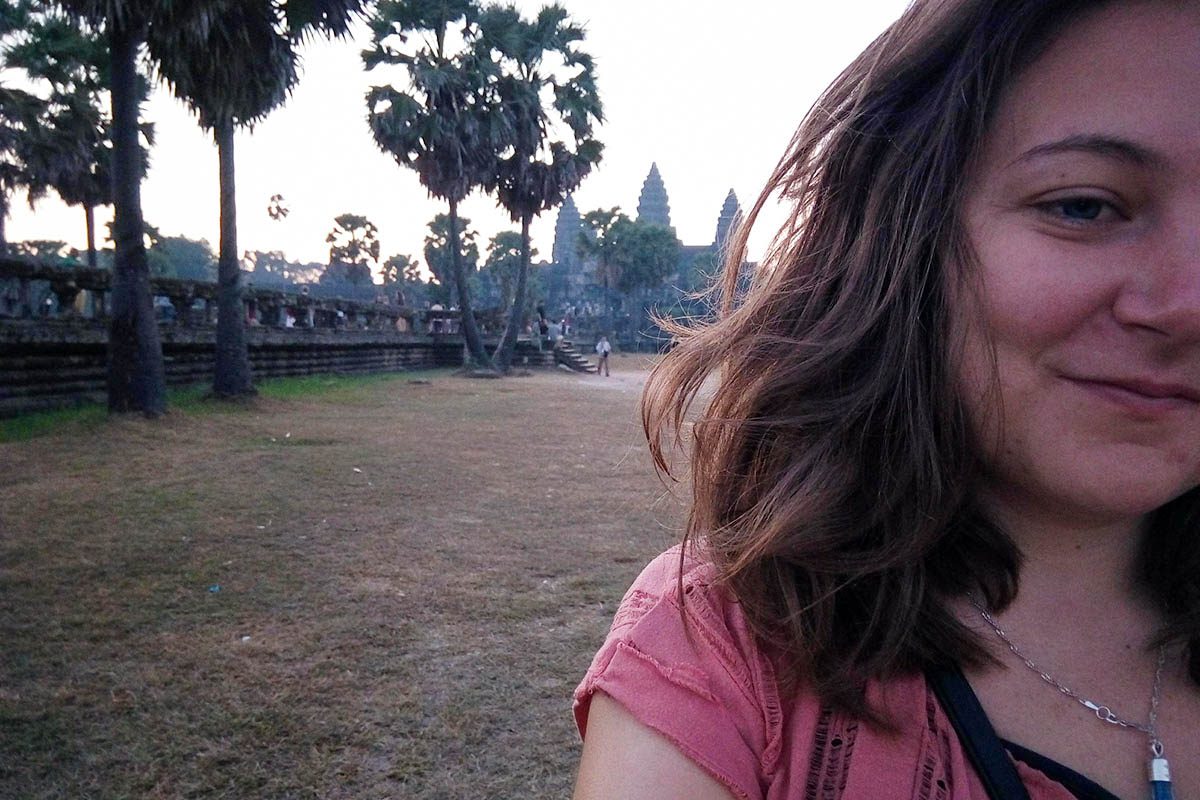
After that, the day is yours to explore the rest of the ruins. I did the ‘big lap’ on this day, taking in sights like East Mebon and Ta Som, which took about 7 hours.
Later that night, I recommend checking out the Cambodian Circus. Don’t worry, there are no animals here – it’s all acrobats doing things with their body that you wouldn’t believe possible. You can purchase tickets here.
Day Three:
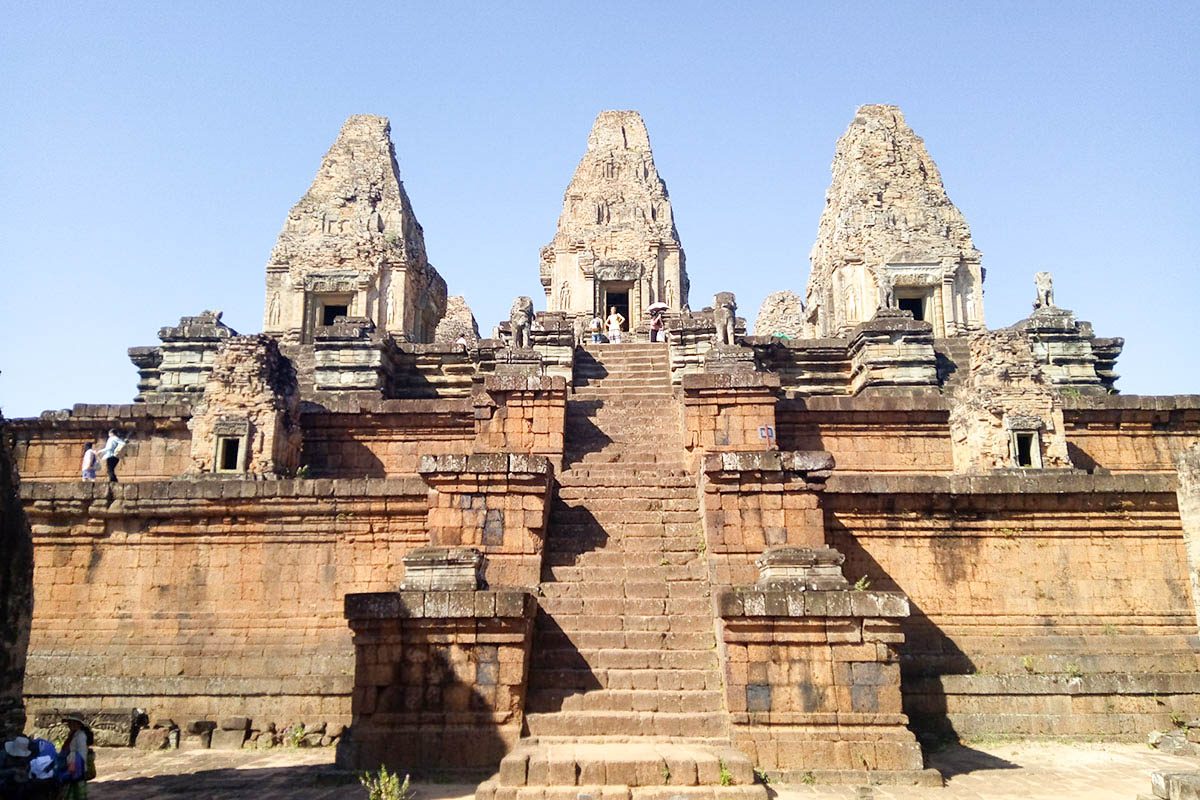
I’d recommend spending day three in Siem Reap seeing some of the other temples, that are a bit further away. A tuk-tuk will take you all the way out here, but it will cost slightly more than trips to the other Angkor Wat temples.
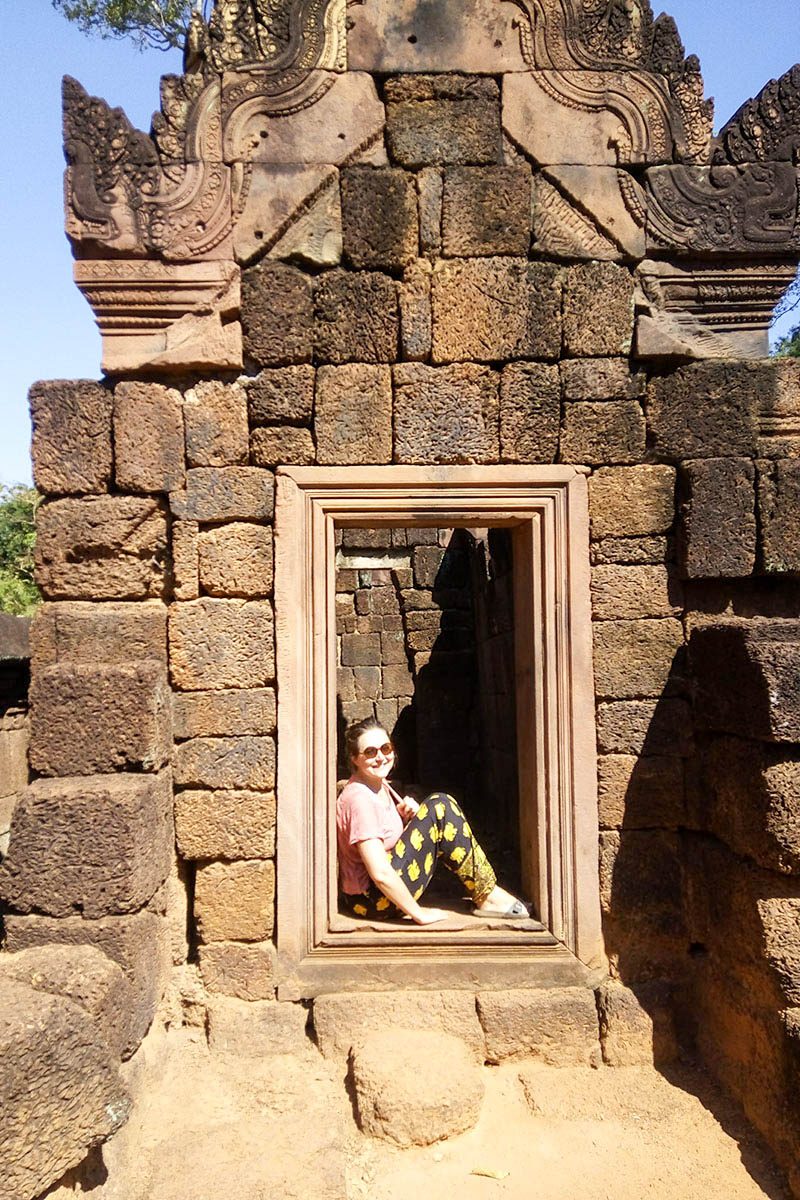
I went to Banteay Srey Temple and it was lovely, so much quieter than the other temples – there were times when me and my travel mate had the whole place to ourselves.
Also in the park is the Landmine Museum, which details a bit more into the tragedy of the wars that have shook South East Asia in the last half-century.
When visiting Angkor Wat, remember it is a religious site – the largest in the world, in fact. So pay the same respects here that you’d pay when visiting any other temple, church or mosque in the world. Here’s a good article with some resources about how to be respectful in Angkor Wat.
Take a night bus from Siem Reap to Sihanoukville – click here to book it.
Sihanoukville – 1 day
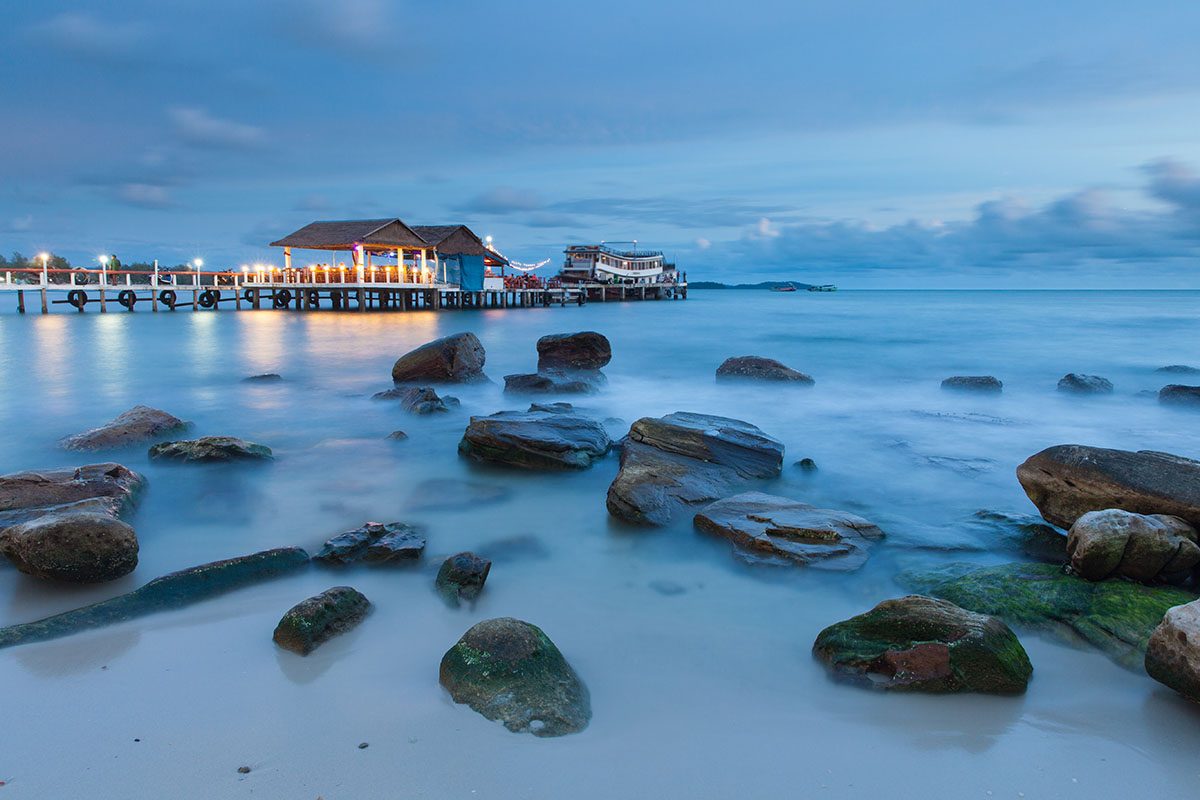
You’ll arrive in Sihanoukville on a night bus early in the morning – and I wouldn’t recommend spending much time here. It used to be a pretty crazy party place – nowadays, it’s a pretty crazy Chinese gambling city.
Walking around, I kind of felt like I was in a post-apocalyptic world, with some neon flashing signs and others still being built – but honestly, it’s not a very nice place. I’m only recommending that you pass through here so you can quickly scoot on over to Koh Rong, where this Cambodia itinerary resumes.
Day Four: Get the heck out of Sihanoukville
Luckily, there are lots of boats heading to Koh Rong. Once you get off the bus, you’ll have a lot of offers of tuk-tuks and scooters. Just hop on one of these and they’ll take you to the place to buy your boat tickets. You might need to wait around for a little while, but it shouldn’t be too long. Make sure you specify where you want to go to on the island, as some boats go to different places.
If you decide to go to Coconut Beach and stay at Coconut Beach Bungalows, you’ll be advised to get a certain boat which is operated by Coconut Beach Bungalows themselves. Here is the Google maps location of the shop selling their tickets.
Koh Rong – 3 days
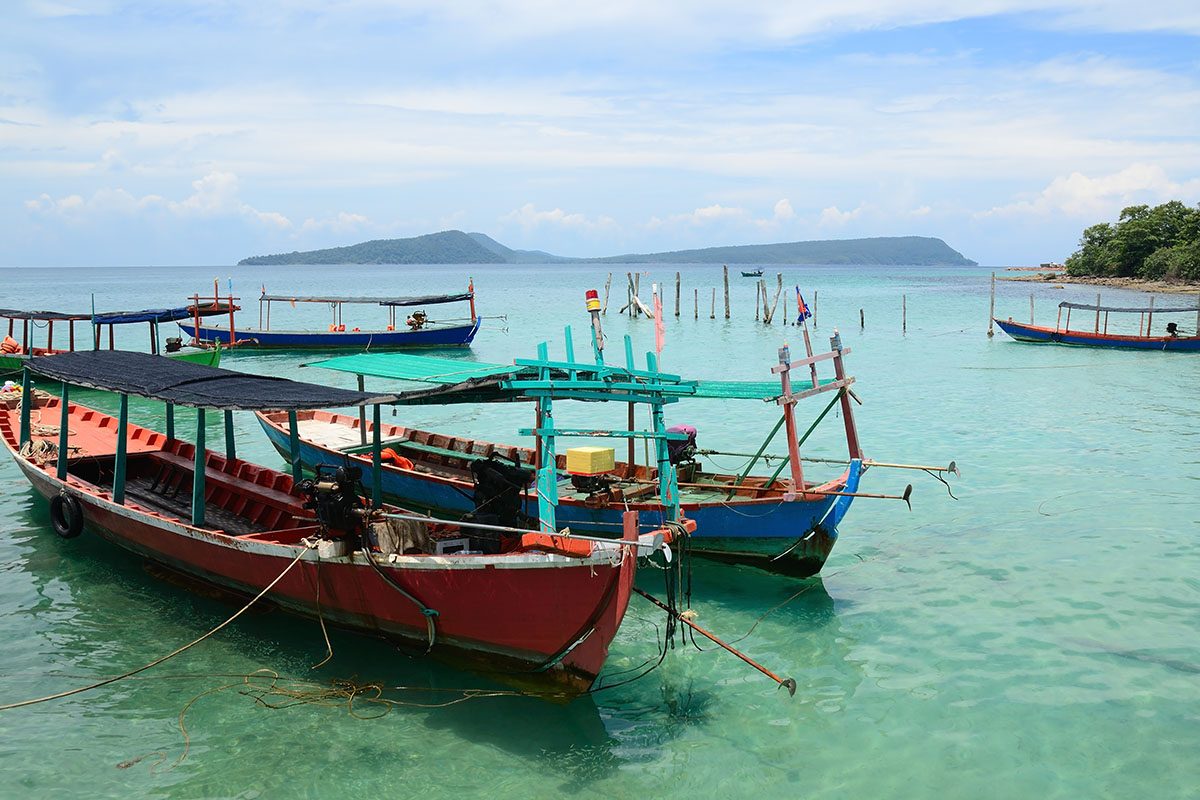
Once you’ve arrived in Koh Rong, you can kick back, find a coconut and watch the sunset. This island paradise is your home for the next three days!
Where to Stay in Koh Rong
Hostel: I’m not sure if it can be classed as a hostel, but Coconut Beach Bungalows is a great budget place to stay. You actually stay in tents right by the sea, which is so relaxing and serene. There’s a good restaurant serving breakfast, lunch and dinner and the owner gets everyone involved in activities like finding glowing plankton at 4am. Click here for rates and to book.
Mid-Range Hotel: Ariya Resort has air-conditioned huts with mosquito nets, with each room offering a private bathroom and free WiFi throughout the whole property. Click here for more information and to book.
Luxury Hotel: Tamu Koh Rong is without a doubt one of the most luxury hotels in Koh Rong with rustic yet deluxe ‘glamping’ style rooms. The four-star property has outdoor showers, and a pool and restuarant on site. Click here for rates and more information.
Day Five – Hang Out in Koh Touch
Koh Touch Beach is the biggest and most developed of Koh Rong’s beaches by far. There are lots of bars, pubs and restaurants in the area and it’s always very busy. It’s a fun place just to hang out, have some drinks and see who you meet, although it can be rather rowdy at times! You can also walk around the jungle that backs onto the beach; Long Set Beach is just 10 minutes away through the forest.
Day Six – Trip to Coconut Beach

Coconut Beach is on the quieter side of the island; it’s a small bay with just a few restaurants, bars and places to hang out. It’s a super chill out spot and is definitely worth visiting for some R&R. I spent most of my time on Koh Rong at Coconut Beach, and I can attest that it’s a wonderful place to spend a day or more, with all you’ll need. Here’s my full Coconut Beach guide.
Day Seven – Snorkelling or Diving Around the Island
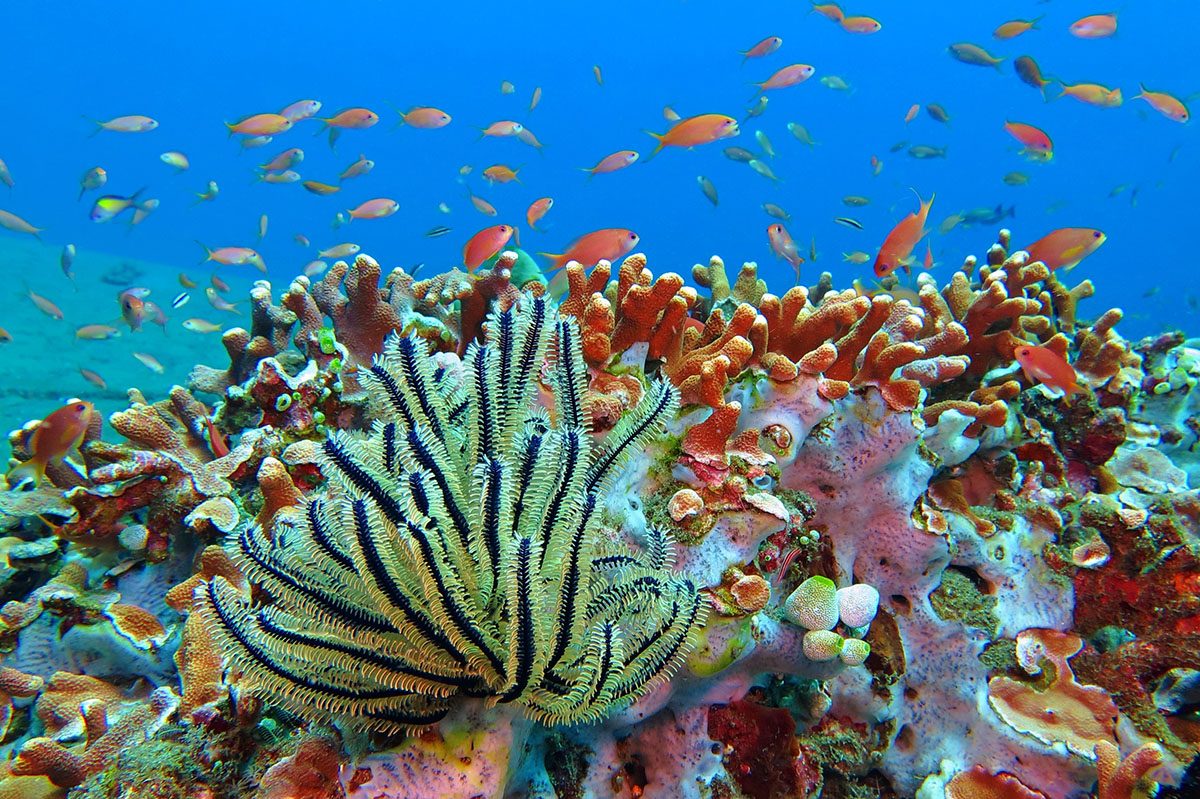
The beaches and forest on Koh Rong are beautiful, but what makes it even more special is the marine life in the surrounding seas. These can be enjoyed on a snorkelling or diving trip with Koh Rong Dive Center. You can do try dives, fun dives, PADI qualifications or snorkelling trips, so there’s something to suit everyone! Snorkelling trips are also bookable here.
Day Eight – Travel from Koh Rong to Kampot
You’ll first need to travel back to the mainland, and then make your way to Kampot. There are a few ways to get from Sihanoukville to Kampot, including:
- A minibus which takes 2-3 hours and costs about $6.
- A taxi which takes around 2 hours and costs about $45.
- A train which takes around 3-4 hours and costs about $8, but only leaves a few days a week.
The easiest way to arrange transport is to book it with your hotel, but here are the train timetables.
Once you arrive in Kampot, you can take a tuk-tuk to your accommodation, which will cost between $2 and $5.
Kampot – 3 days
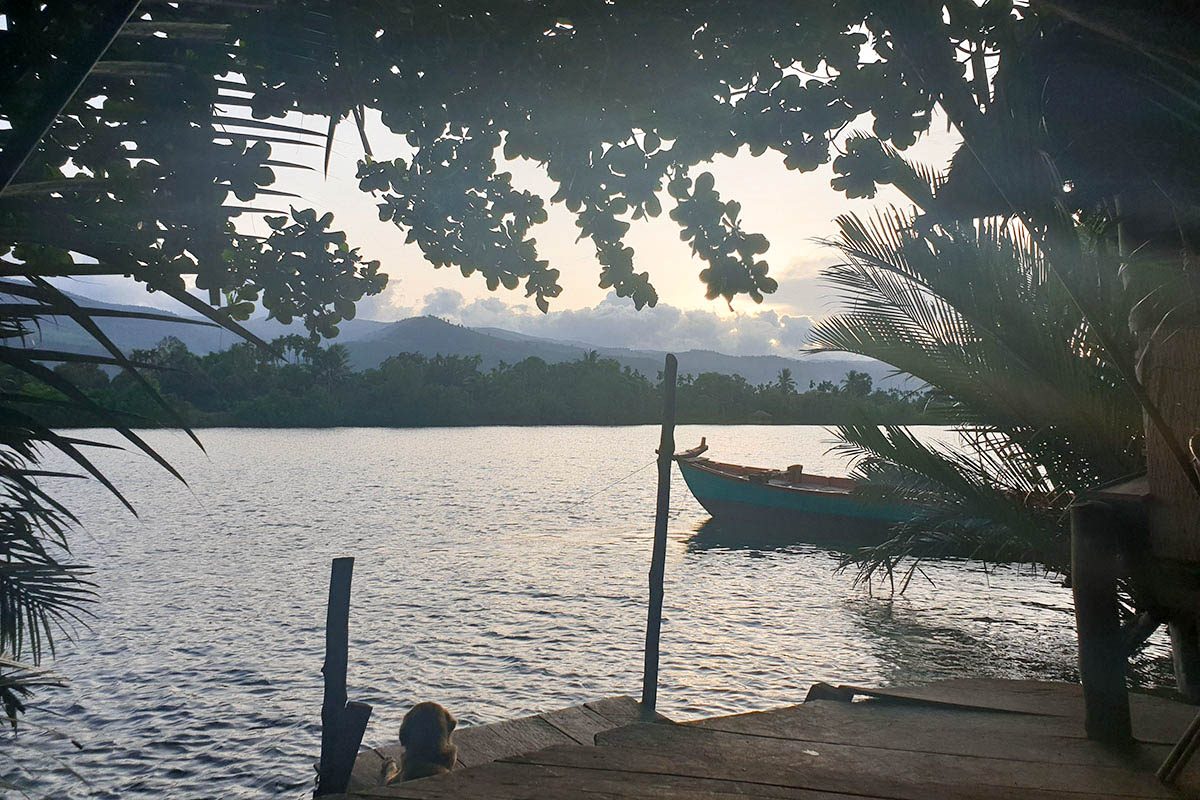
The best advice I’d give to anyone who is planning a trip to Cambodia is to not miss Kampot. This is probably my favourite place in South East Asia: I love how chilled out and relaxed it is, as well as the fact that a lot of businesses here are really doing good. It’s also absolutely beautiful, with palms overlooking the tranquil river. It’s not the place to party, but definitely somewhere to recharge for a few days.
Where to Stay in Kampot
Hostel: Bohemiaz Resort is a perfect chill-out space, with a spa, jacuzzi, steam room and sauna – it may well be the most luxurious hostel you’ve ever stayed in. There’s a restaurant and bar on site, and you can choose to stay in one of the dorm rooms or the hobbit huts. Click here for rates and to book.
Mid-Range Hotel: I loved loved LOVED Eden Eco Village. It was possibly the best place I’ve ever stayed. You stay in beautiful rustic huts which overlook the river and a scenic view of palm trees, there’s free yoga, the food is incredible and it’s in a wonderful tranquil setting. Book it, you won’t regret it. Click here for more information.
Luxury Hotel: Le Bokor Palace is one of the most imposing and luxurious places to stay in Kampot. With period decor, friendly and helpful staff, and a bar and restaurant on-site, you’ll feel like you’re in the lap of luxury at Le Bokor Palace. Click here for more information and to book.
Day Nine – Cycle Tour Around Kampot
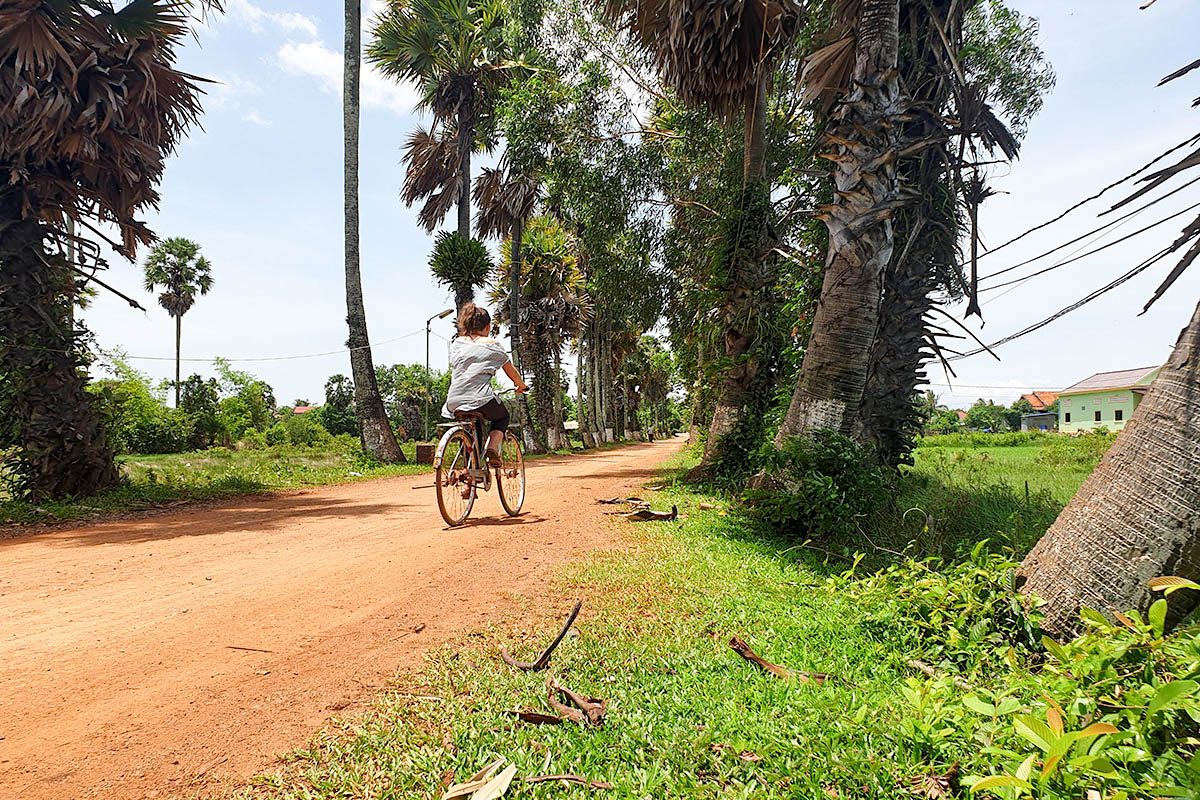
It’s very easy to do a self-guided cycle tour around Kampot, and there are many places to visit in and around the town. I used a bike provided by my accommodation and saw the following:
- Toek Vil Pagoda – a lovely riverside church where you’re likely to be the only tourist
- Banteay Srey Spa – a wonderful project that employs young women and trains them to be masseurs and beauty therapists
- Farmlink (pepper farm) – a place where you can learn all about the production of Cambodian black pepper, which is a booming local business
- The durian roundabout – pretty self-explanatory… it’s a roundabout with a huge durian on it!
- The colonial buildings of the town centre – these are from the French colonial period and are a typical style of architecture
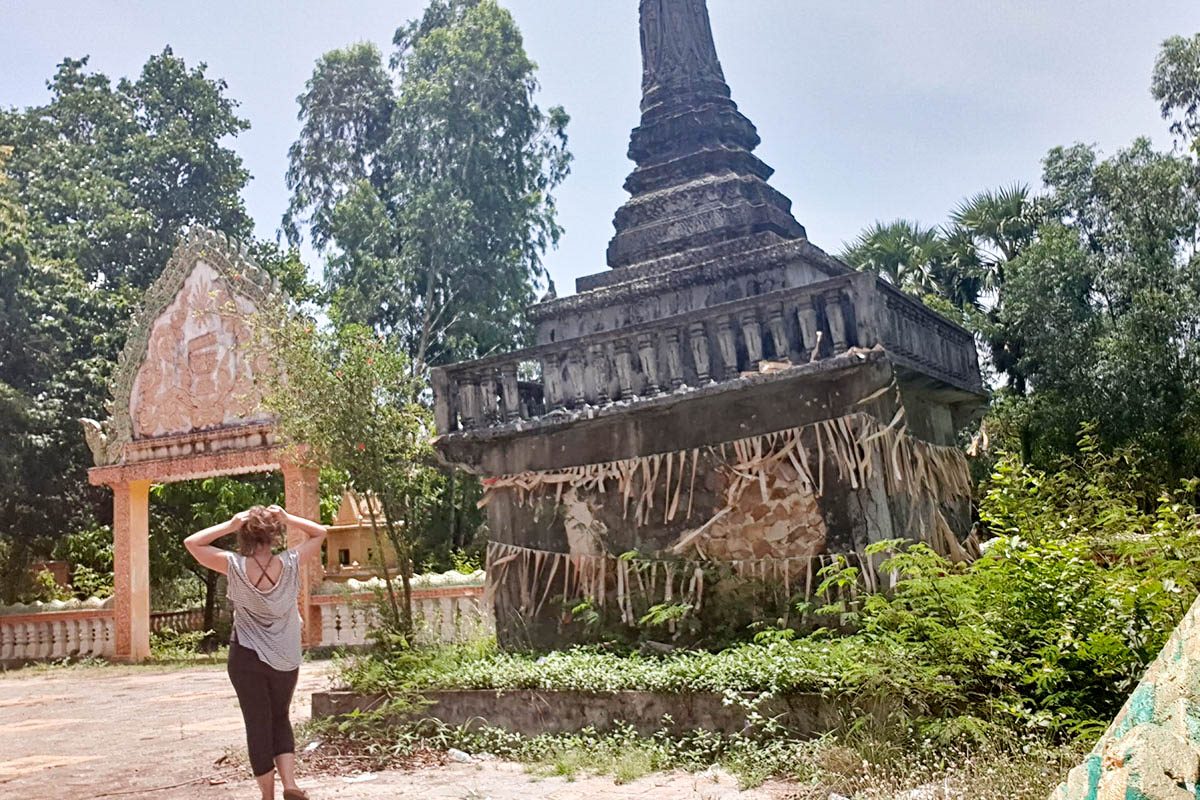
Remember to pack your camera (there are so many amazing places to take photos!), lots of suncream, a big bottle of water and mosquito repellant.
You can get food at Banteay Srey Spa, so I’d recommend visiting around lunchtime – it’s really delicious. I had a vegan English breakfast – yes, you can get that in Cambodia! – and it was wonderful.
You can check out my video of my day in Kampot here
In the evening, there are some fun bars to check out in Kampot with great happy hour deals.
Day Ten – National Park Tour
Bokor National Park is close to Kampot and makes for a perfect day trip. If you’re feeling adventurous, you could rent a bike and explore it yourself (I would only recommend doing this if you have experience though!), or you could jump on a tour from Kampot.
The park has beautiful lookouts, a moutain to climb, abandoned buildings and amazing tropical scenery. It’s well worth a day trip from Kampot!
In the evening, check out the night market for some local food and drinks.
Day Eleven – Relax in Kampot
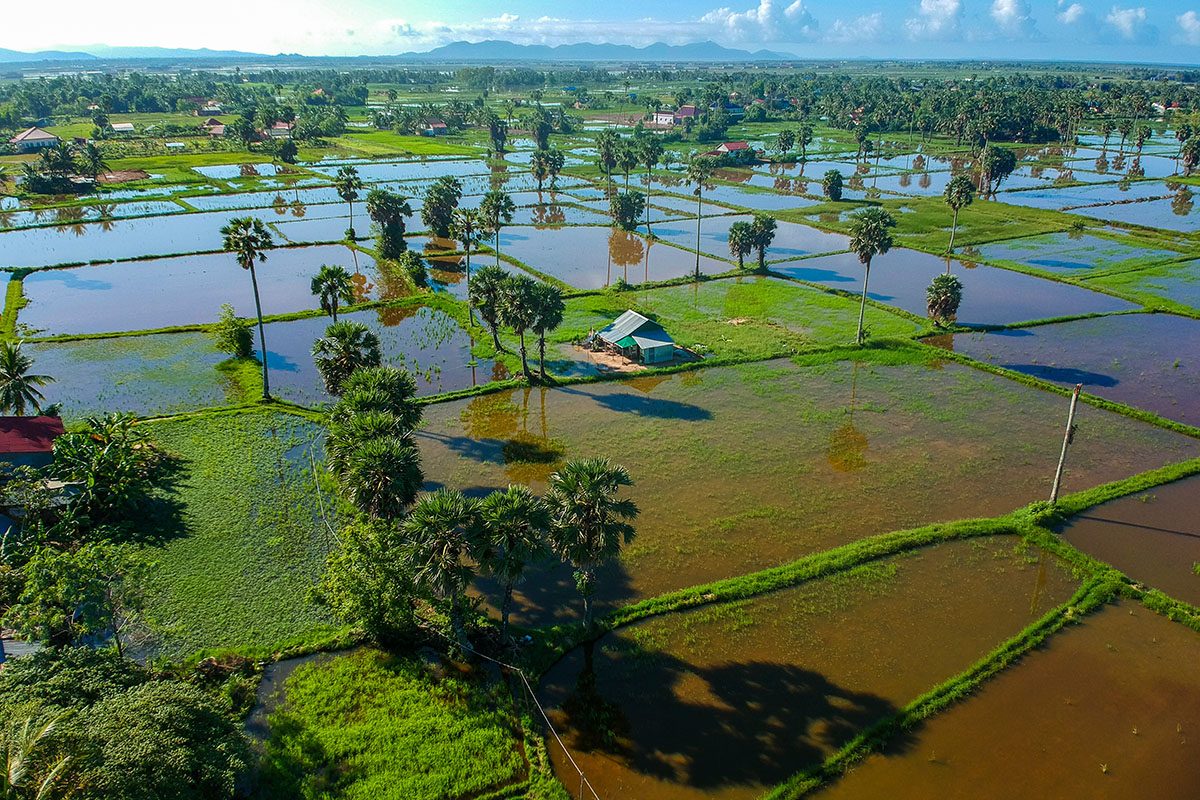
Spend the next day relaxing in Kampot. There’s just so much to take in here – beautiful Cambodian countryside, wonderful food and amazing people. You might want to swim or kayak on the river, or cycle through the countryside again, or maybe just kick back in a hammock and relax.

I would definitely recommend doing a sunset boat tour along the river though. There are a few options leaving from town, and when the fireflies come out it’s really magical.
Day Twelve – Travel Kampot to Phnom Penh
Travelling from Kampot to Phnom Penh doesn’t need to take all day – it’s a 2.5 hour journey, although there is some waiting around. You can book a time that suits you online or at your accommodation, and either spend some extra time in Kampot in the morning or head to Phnom Penh and walk around the city in the afternoon.
Phomn Penh – 2 days
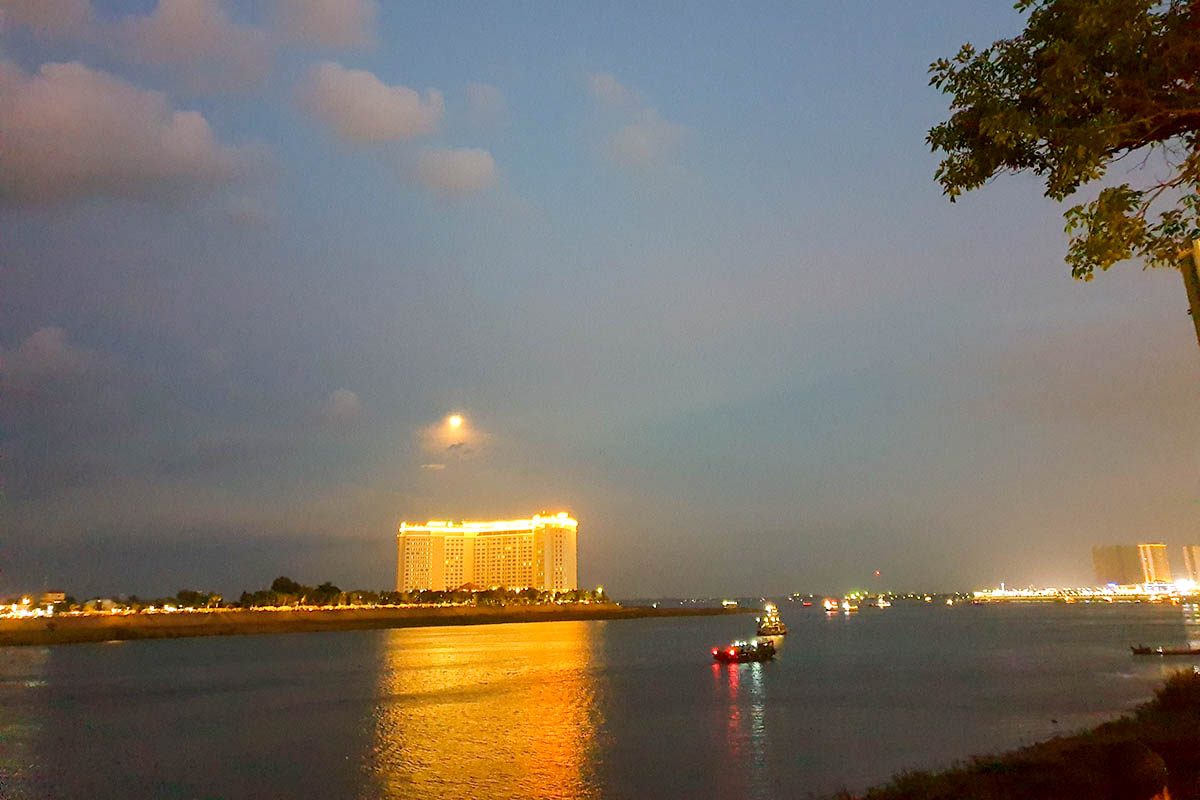
Phnom Penh is an important part of your Cambodia itinerary, but it’s not going to be an easy part. It’s where you’ll get the chance to learn all about the Cambodian genocide through various memorials, and it’s as sickening and as shocking as you can imagine.
There are, however, other things to do in Phnom Penh – I’d recommend dedicating a day to the memorials, as you won’t feel like doing much else after seeing them, and then spending a day learning about the more positive side of Phnom Penh’s history and culture.
I’d recommend checking out the central market in Phnom Penh when night falls, there are some great clothes there that are actually much more durable than most trousers from South East Asia (I still have a pair that I bought there and have worn about 100 times – if you’ve ever bought trousers/ pants in South East Asian markets you’ll know how impressive that is!). There are also places to get dinner and AMAZING coconut ice cream.
You could also spend some time checking out the best cafes in Phnom Pehn like the lovely Connecting Hands which is an NGO and supports worthwhile causes.
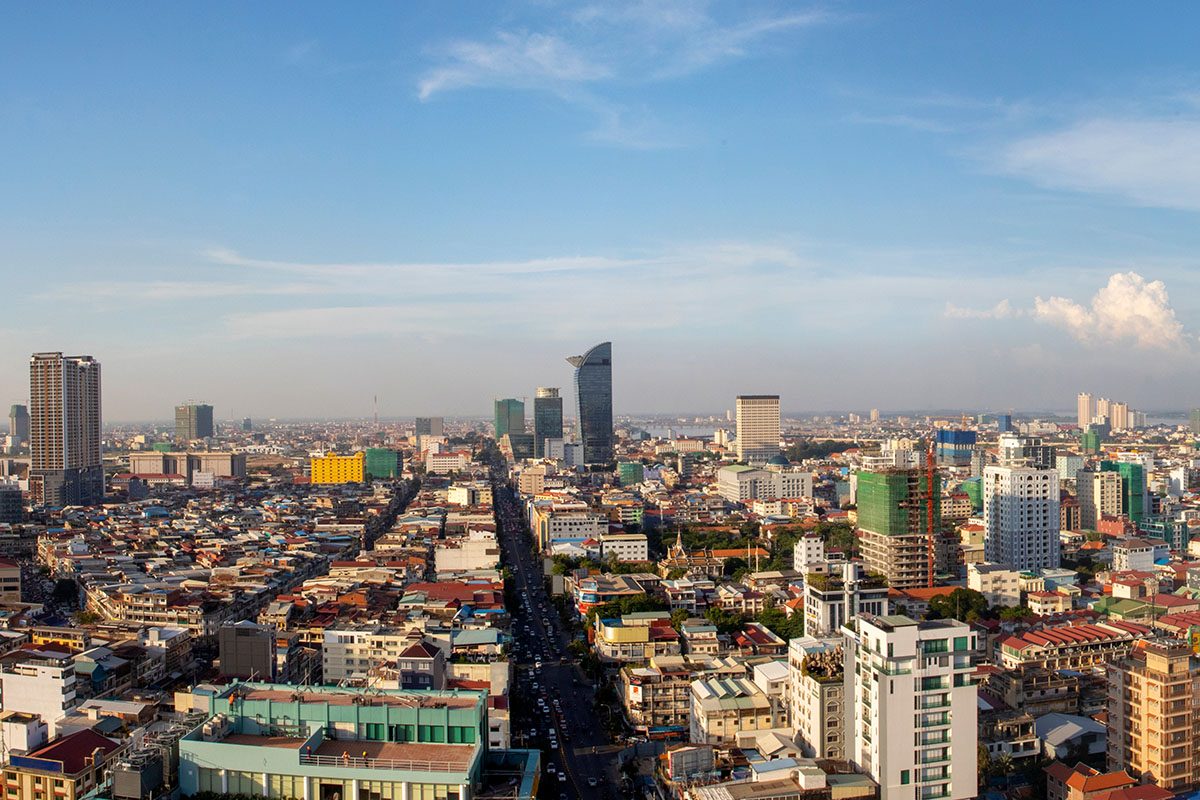
Where to Stay in Phnom Penh
Hostel: I stayed at Coolwrong Hostel and really enjoyed it. The rooms are squeaky clean, beds have a good amount of privacy, it’s very laidback and relaxed and there is a restaurant downstairs. The family who run the hostel are very sweet as well. Click here to learn more and to book.
Mid-Range Hotel: Aquarius Hotel and Urban Resort has trendy, minimalistic rooms with luxurious bathrooms – some with bathtubs. Enjoy an outdoor pool and a spa on-site. Click here for more information and to book.
Luxury Hotel: The Palace Gate Hotel and Resort is an oasis in the middle of the city. With a pool surrounded by day-beds, an on-site spa, and gorgeous rooms with a mix of period and modern features, it’s a great luxury pick in Phnom Penh. Click here for more information and to reserve your room.
Day Thirteen – The Killing Fields and S21 Prison

This is a horrible day, but it’s very very important. Cambodia was victim to a huge genocide, not long ago. From 1975-1979, the Khmer Rouge took brutal control over the country, killing 25% of its citizens. An estimated 1.6 – 1.8 million people were murdered or perished during this dark time, and it went from being a rather developed South East Asian nation to a poverty-stricken country.
I believe that it’s really important to learn about this side of Cambodia’s history because educating ourselves in this kind of history hopefully helps it not repeat itself. It also gives visitors a key education into how Cambodia was like as a country then, and subsequently what it is like now – it definitely changed the way I looked at the country, and travelling in South East Asia as a whole, and helped me be a more respectful traveller.

That being said, it’s so important to visit these places respectfully – it’s asked to not wear revealing clothes as it’s a memorial site, and obviously don’t be noisy, take selfies or do anything else that might be seen as disrespectful. I read this article that states that ‘too many tourists’ are visiting the Killing Fields – or, to be more exact, too many tourists are visiting for the wrong reasons.
It’s really important to go to these sites to learn about what happened and want to know what we can, as a whole, learn from it – not to just tick something off a list.
You can take a tuk-tuk to the Killing Fields and S21 Prison; there will be plenty of people offering, and it should cost you $15 for the whole day. The driver may or may not chat to you about it on the way, just go with what they’re obviously comfortable with.
The Killing Fields are about half an hour out of town, and they’re a truly harrowing site. Take the audio guide, take your time, listen to the stories.
The S21 Prison is back in town, and again is best experienced with an audio guide. Again, it’s a shocking, brutal place – but I do think humanity can collectively learn so much from both of these places.
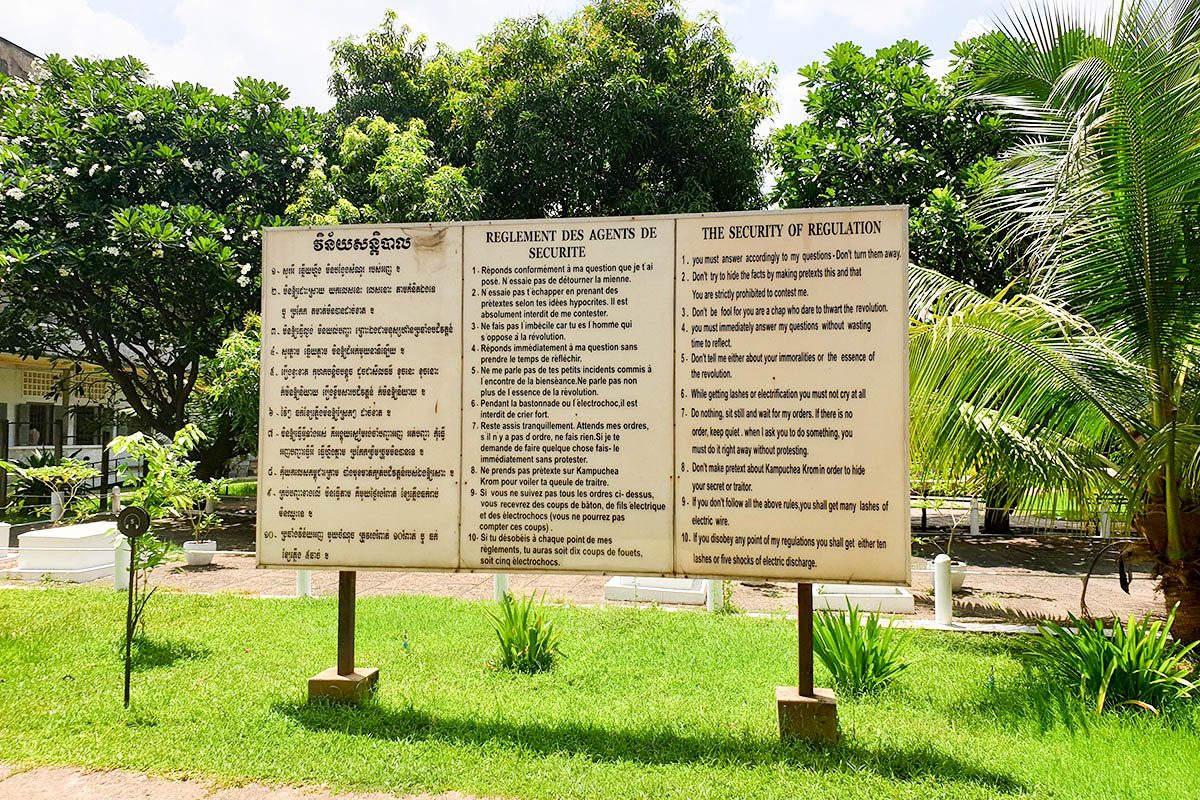
I’ve written a longer, more detailed blog post about my thoughts on the Phnom Penh Memorials – you can click here to read it.
For the rest of the day, you’ll probably just want to quietly pay your respects. Maybe take a stroll along the Phnom Penh river and reflect.
Day Fourteen – The Rest of the City
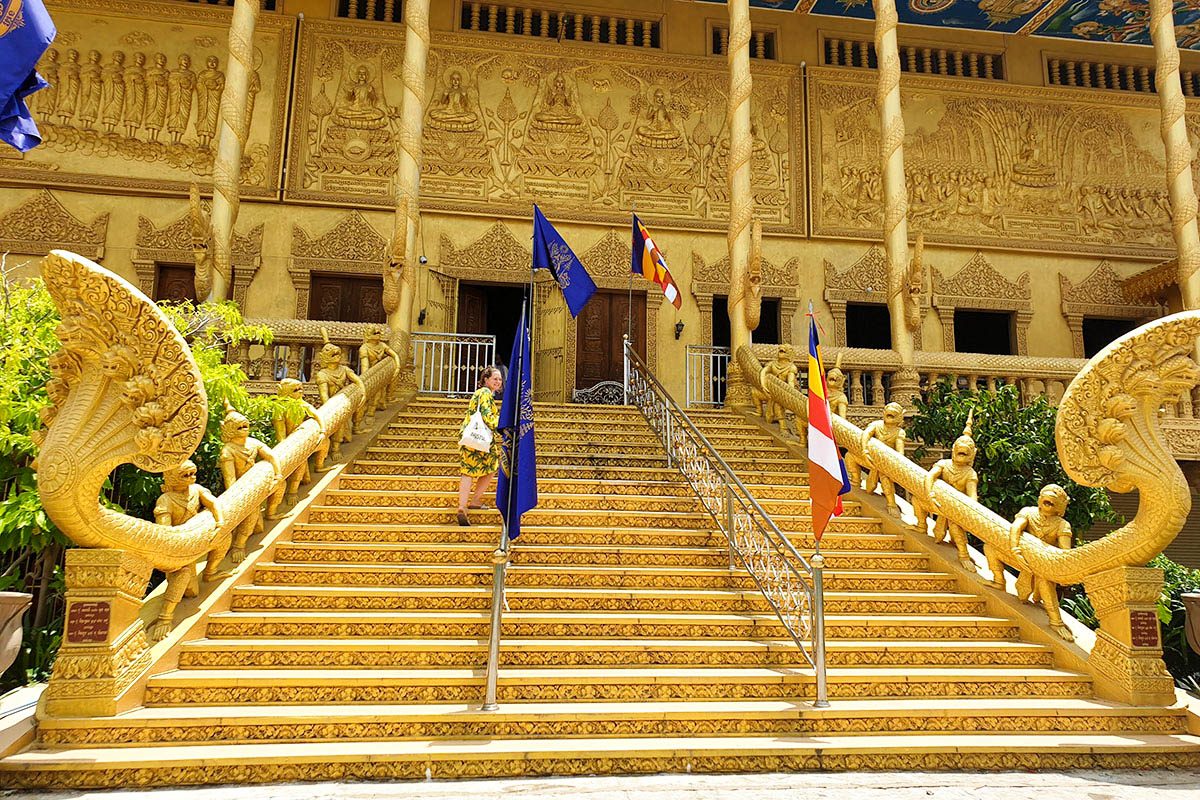
Your driver will probably be willing to take you to some other spots around the city the next day – if they’re not, there will be lots of people who will. While much of Phnom Penh’s history is very sad, there is a happier side, and this can be shown through the other spots of the city.
Some places I visited with my tuk-tuk driver were:
- The Silk Farm – silk is a growing industry that has helped Cambodia a lot since their country was devastated. You can take a guided tour of the silk farm with a local guide – there’s also a swimming pool there if you want to cool off in the sweltering Phnom Penh heat – and the option to purchase items. I didn’t want to buy any silk, but there was also some products made of Cambodian cotton to buy so I got a cotton headscarf.
- Yellow Temple – this temple was far out of the tourist trail, and somewhere that I would never have found if it wasn’t for my tuk-tuk driver.
- Royal Palace – the Royal Palace is a huge complex that details the story of the monarchs of the country. I would recommend
- Museum of Cambodia – this museum tells the story of Cambodia from ancient times
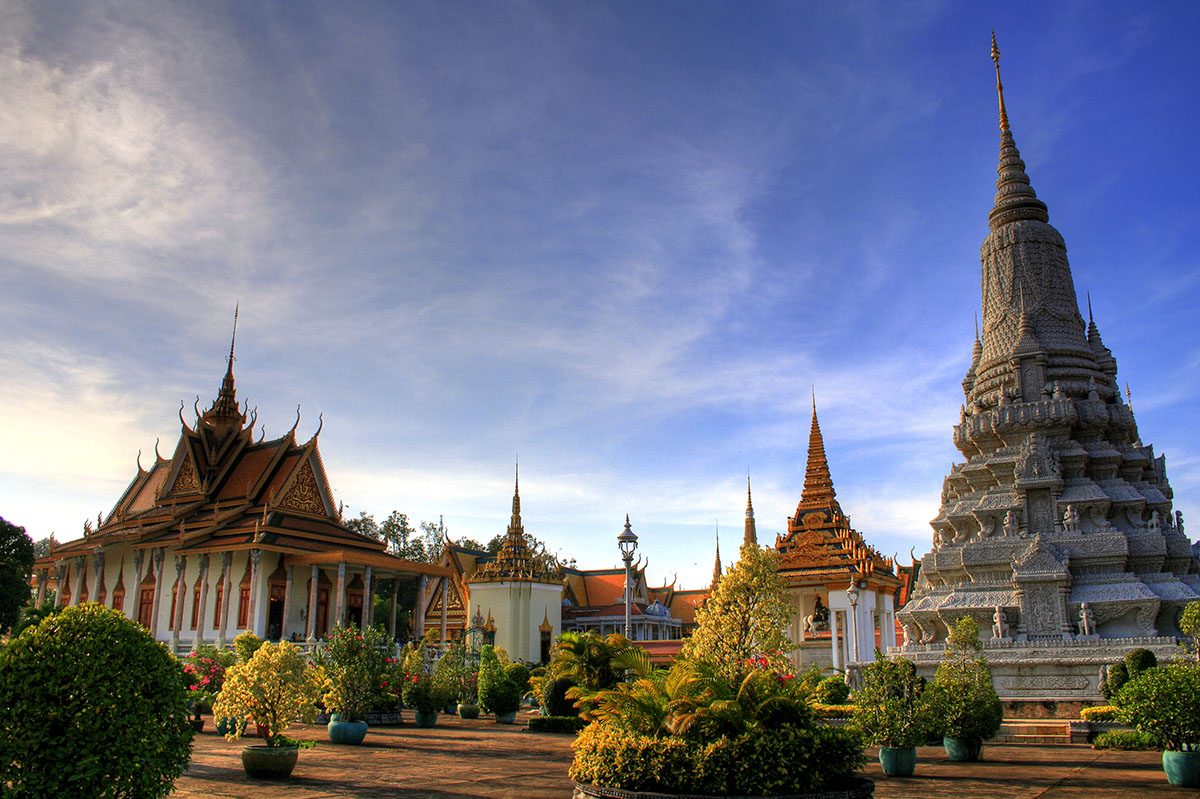
Your tuk-tuk driver will also happily recommend restaurants and answer any other questions that you might have – generally they speak very good English. I paid $20 for my tuk-tuk driver to drive me around all day.
Where to go from Phnom Penh
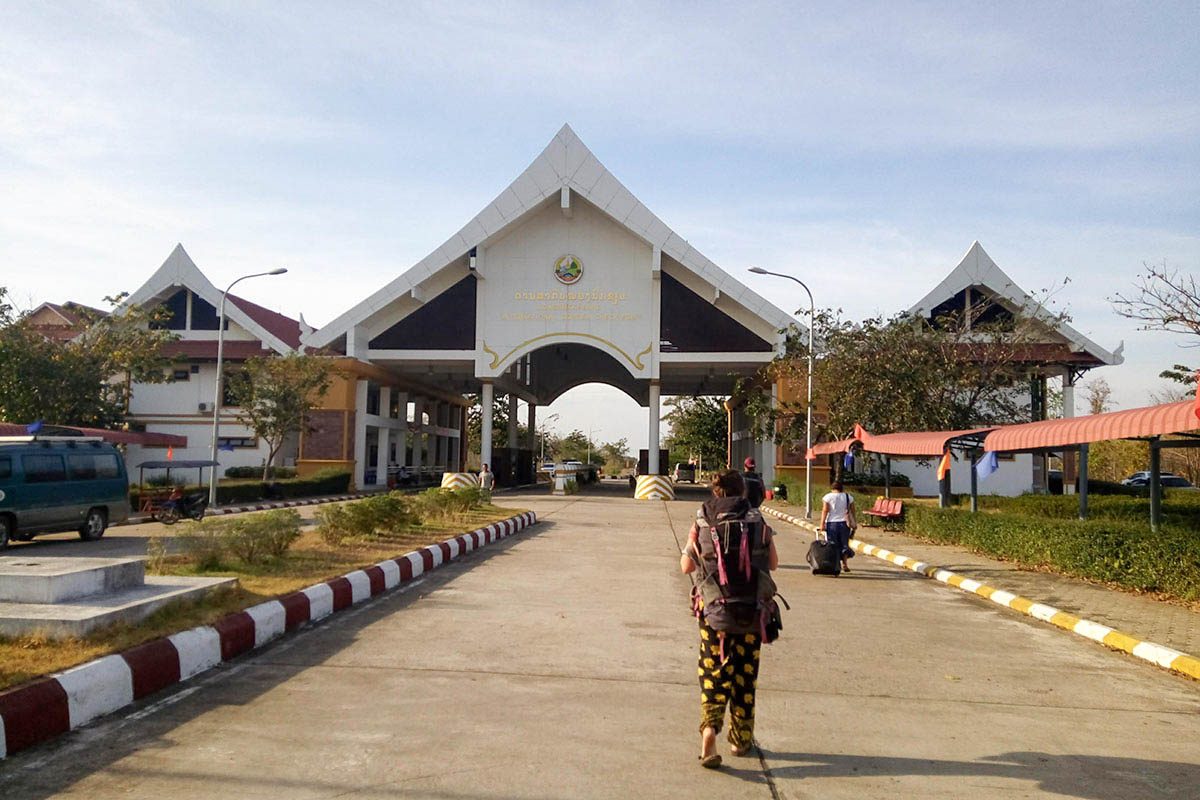
From Phnom Penh, you have a few options. It’s easy to head into Vietnam from here, either on a sleeper bus to Ho Chi Minh City or a day bus to the Mekong Delta (which goes via Kampot). You can also take a sleeper bus to Bangkok. Or head north, to Pakse in Laos and start a Laos adventure.
You can book all of your travel on Bookaway.
What to Pack for Cambodia
I’m going to write a full South East Asia packing list soon – stay tuned – but some Cambodia essentials that you might want are:
- Loose, light clothes – it doesn’t often get cold in Cambodia! However, make sure that you have some modest clothes for temples and memorials. Cambodia a conservative country and it’s not respectful to walk around non-touristy places in super short shorts – I’d recommend taking a few pairs of light trousers and saving the shorts for the beach.
- A Cambodia guidebook – this will be very helpful when you’re exploring all the different attractions. Buy Lonely Planet Cambodia here.
- A travel adaptor – Cambodia uses European-style adaptors. So if you’re coming from anywhere else in the world, you’ll need your own adaptor. Purchase an international adaptor here.
- Suncream – Cambodia can be absolutely roasting, and many suncreams sold here have whitening in them. Plus suncream is one of the only things that’s a lot more expensive in Asia than back home. Purchase some suncream by clicking here.
- A Water-to-go-Bottle – You can’t drink the tap water in Cambodia – unless you have one of these jazzy gadgets. After flushing the filter initially, you’re good to drink tap water from it for up to 2 months – then you’ll need to change the filter. Click here to buy a Water-to-Go-Bottle.
- Metal Straws – South East Asia does have a plastic problem. Be part of the solution by using reusable straws rather than plastic straws. Click here to purchase metal straws before you go go.
- Power bank – You’re likely to take some long bus journeys in Cambodia, so you’ll probably want to keep your device charged. Click here to purchase one.
- Camera – you’ll want a good camera for all your Cambodia pictures! I use and recommend the Fujifilm x-a3 – click here to purchase one.
Being Respectful in Cambodia
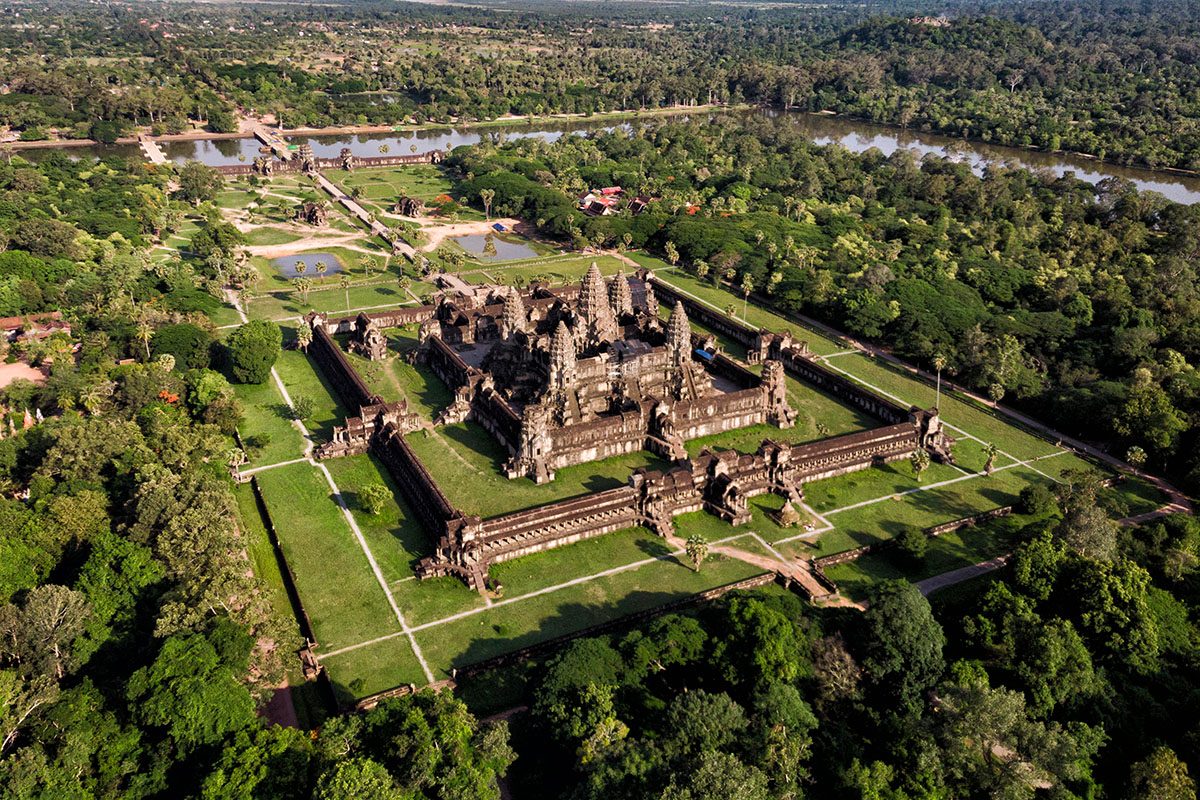
As I’ve mentioned a few times, this country went through four years of absolute hell under the rule of Pol Pot, and is still rebuilding and healing today. The whole country is suffering from first or second generation PTSD, and while tourism has helped them a lot financially, the wrong kind of tourism can really damage the country.
Some ways to be respectful in Cambodia include:
- Learning about the genocide. Don’t impose yourself onto locals with questions (unless they broach the subject first and you can tell they want to talk about it), but read about it, visit the memorials, and understand the enormity of what happened.
- Use local businesses. Cambodia has a big problem with foreign-owned businesses who are setting up places that don’t help the local people. Using businesses that are run by Cambodians and employ Cambodians help this enormously. I’ve tried to recommend as many local businesses in this post as possible – let me know if you find any others that are worth a shout out.
- Dress respectfully. As mentioned above, Cambodia is a modest and religious country – but for some reason, many backpackers and tourists don’t seem to think it applies to them. Just because Cambodia is a popular, cheap place to travel, it doesn’t mean that it’s somewhere where we can do whatever we want. The punishments for being provocative and disrespectful are high, but they can easily be averted by just being a bit more modest.
Useful Khmer Phrases

I’ll be honest, the English level in Cambodia is generally pretty good and because it is such a different language to English, it’s not expected that you’ll speak Khmer. However, Cambodians really love it if you speak a little of their language – here are the words I learned…
Hello – suostei
Thankyou – arkoun
Goodbye – leahaey
Please – saum
Books to Read About Cambodia
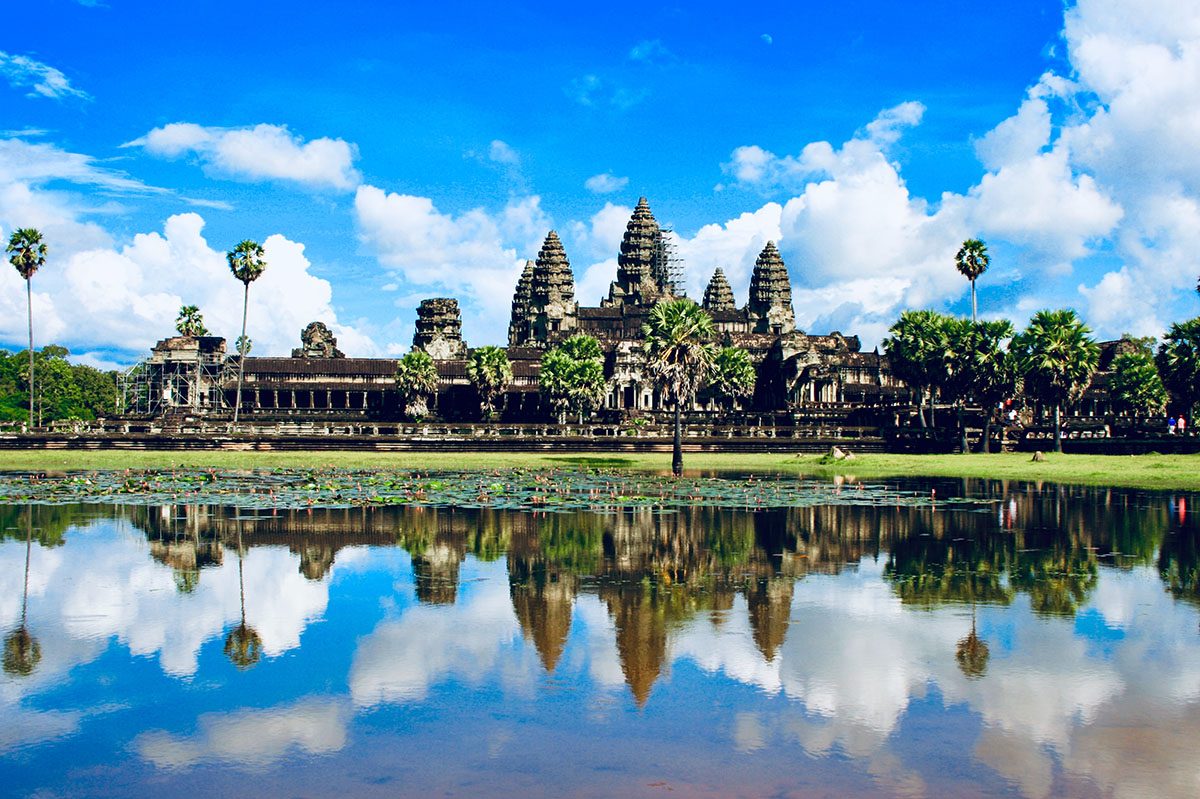
Your Ultimate Cambodia Travel Itinerary
I hope that this 2 weeks in Cambodia itinerary has shown you exactly how you can spend 14 days travelling around Cambodia! It’s not quite long enough, but it’s still plenty of time to enjoy some of the best things that this fascinating South East Asian country has to offer. I can guarantee you’ll be back for more!
Check Out My Other South East Asia Itineraries
If you have any questions or want to connect, I’m over on Instagram and YouTube!

Cambodia is one my absolute favorite countries in the world!! As I was looking at the list I was happy I got to see some of these beautiful places, but realized there are so many more to visit!!